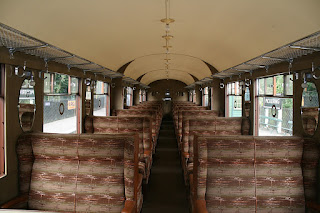Sir Nigel Gresley needs no introduction. I visited Pickering in the summer of 2012 and visited the church, the castle and the station. The station with the historic feel of my childhood needs revisiting. What a magnificent engine - power and the majesty of the engine together with the ambience makes for something special. Here are the photos - but for once no substitute for the real thing.
 |
| On the platform of Pickering station |
 |
| Sir Nigel Gresley coming in to the station pulling a special |
 |
| Close up of the front of the engine |
 |
| One of the original carriages |
 |
| The British Rail Logo |
 |
| This is seriously impressive, the heat was just emanating from this big wheel |
 |
| Sir Nigel Gresley was the worlds fastest steam locomotive at one time This was succeeded by Mallard |
 |
| Close up of the valve gear |
 |
| Close up of this majestic engine |
 |
| Another close up |
 |
| I like this shot! I don't know why? |
 |
| ID Plate |
 |
| This is really large, and hot, and smelly and wonderful! |
 |
| Inside of cab complete with brew-cans for the driver and fireman |
 |
| Close up of guages |
 |
| Sir Nigel Gresley reversing back to the back of the train |
 |
| Inside a carriage |
 |
| Ready to be coupled to the coaches |
 |
| Showing the lights |
 |
| Right above the bogies |
 |
| Reattaching the lights at the rear |
 |
| Close up of the valve gear |
 |
| Speedo! |
 |
| To be attached to the rear of the train |
 |
| Close up |
 |
| The Brake! The last shot! |





